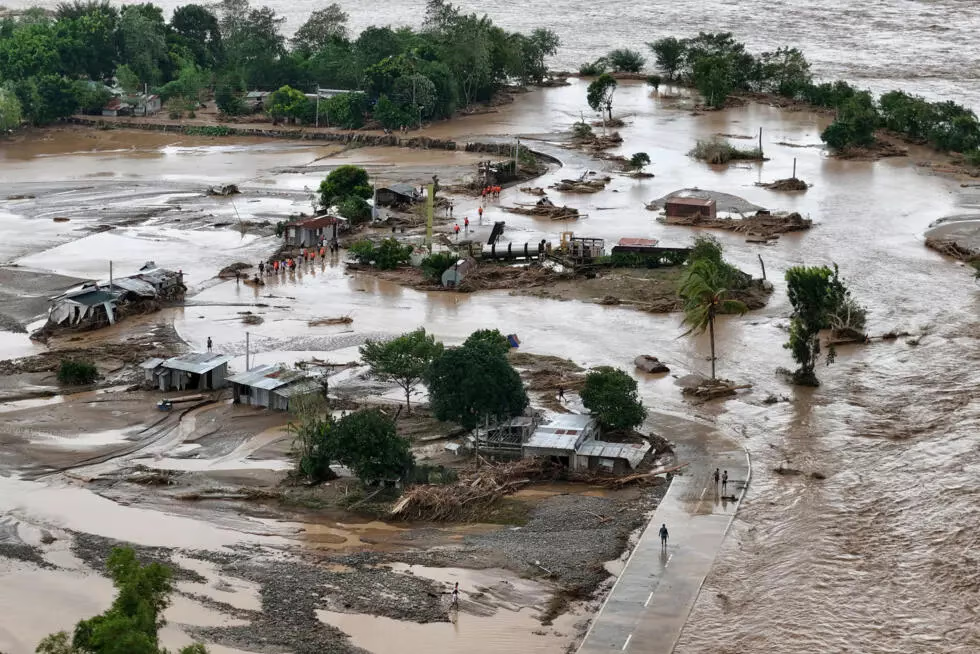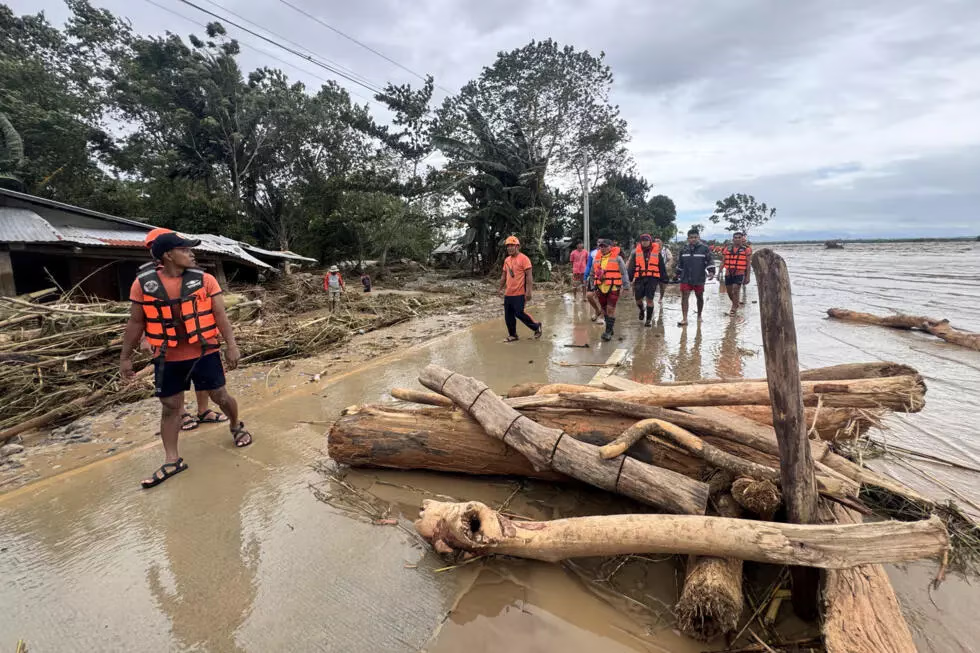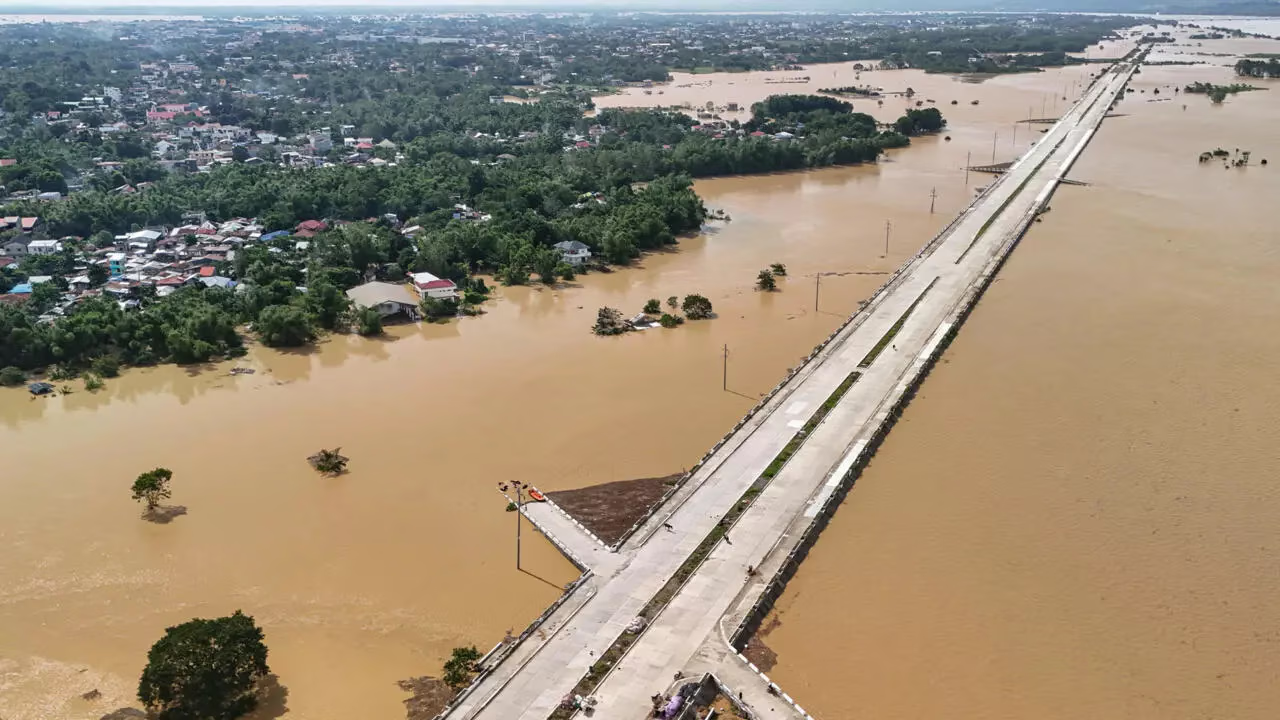Rescue teams using excavators and chainsaws have begun clearing debris after Typhoon Fung-wong swept across the Philippines. On Tuesday, November 11, as floodwaters receded from hundreds of villages, the death toll rose to 18.
The storm, which left 1.4 million people homeless, weakened to a severe tropical storm but continued to bring heavy rains over Taiwan, where it is expected to make landfall on Wednesday.
On Tuesday, Taiwanese authorities evacuated more than 3,000 residents and issued a storm warning.
This is already the second powerful typhoon to hit the Philippines in just a few days. A week earlier, Typhoon Kalmaegi tore through the central islands of the archipelago, claiming 232 lives, according to the latest reports.
Scientists warn that hurricanes are becoming increasingly destructive due to human-induced climate change. Warmer oceans fuel rapid intensification of typhoons, while a heated atmosphere retains more moisture, leading to heavier rainfall.
In the coastal province of Isabela, a town of six thousand residents remained cut off from the outside world on Tuesday, a civil defense official reported. A similar situation was observed in the neighboring province of Nueva Vizcaya.
“We’re struggling to reach these areas,” said Cagayan Valley regional representative Elvin Aison, adding that landslides are hindering rescuers from reaching those affected.

Entire towns in Cagayan province were submerged after the river overflowed its banks amid torrential rains brought by Typhoon Fung-wong.
“Many people are now in evacuation centers, but once they return home, recovery will take time and require significant effort,” a rescue service representative said.
He added that in Nueva Vizcaya province, a 10-year-old boy was killed in one of the landslides.
The child was among the 18 confirmed dead, according to updated figures released Tuesday by Deputy Director of the National Civil Defense Service Rafaellito Alejandro.
In a phone interview with AFP, Alejandro said that even the “initial recovery efforts” would take several weeks.
“Our main priority now is to restore key infrastructure: clear the roads, restore electricity and communications. We’re already working on it,” he noted.
On Catanduanes Island, the hardest-hit area, restoring the water supply system could take up to twenty days, Alejandro added.
On Tuesday, schools and offices were closed in several districts across Taiwan as the approaching storm intensified the northeast monsoon and brought torrential rains.
According to meteorologists and government officials, up to 400 millimeters of rainfall could accumulate within the next 24 hours.
President Lai Ching-te urged residents to stay away from mountain areas, coastlines, and “other dangerous locations” to “get through this period safely.”
In Northern Provinces, Floods and Landslides Have Cut Off Entire Towns as Rescuers Clear Debris and Restore Communications

People walk past debris left behind after Typhoon Fung-wong swept through the town of Tuao in the Philippine province of Cagayan.
In Cagayan province, located in the basin of the Philippines’ largest river, local rescue chief Rueli Rapsing told AFP that in the neighboring province of Apayao, a sudden flash flood caused the Chico River to overflow, forcing residents to seek refuge on higher ground.
“We’ve received reports that some people have already climbed onto their rooftops,” he said, adding that most have been rescued.
A resident of Tuao in Cagayan province, 24-year-old Mark Lamer, told AFP it was “the strongest typhoon I’ve ever experienced.”
“We never thought the water would reach us. It had never risen this high before,” he said.
More than five thousand people were evacuated before the Cagayan River overflowed its banks and flooded the small town of Tuguegarao, located about thirty kilometers away.
“Tuguegarao is now underwater,” Rapsing reported.

Residents burn timber salvaged from destroyed homes along the seawall in Garchitorena, Camarines Sur province, Philippines.
The death toll from Typhoon Fung-wong rose on Monday following reports of the deaths of five-year-old twins and an elderly man in landslides across two northern Luzon provinces.
According to regional official Elvin Aison, the children died around 2 a.m. while their family was asleep at home. Seasonal monsoon rains had already softened the soil around their house before the typhoon struck, he noted.
The first fatality was recorded in the southern province of Samar, where a resident died a day earlier. Another person was killed on Catanduanes Island, where storm surges flooded streets and homes on Sunday morning.
A week earlier, Typhoon Kalmaegi had caused massive flooding in the central regions of the Philippines, sweeping away cars, coastal shacks, and shipping containers.
On Monday, President Ferdinand Marcos Jr. announced that the “national calamity” status declared after Typhoon Kalmaegi would remain in effect for the rest of the year.
